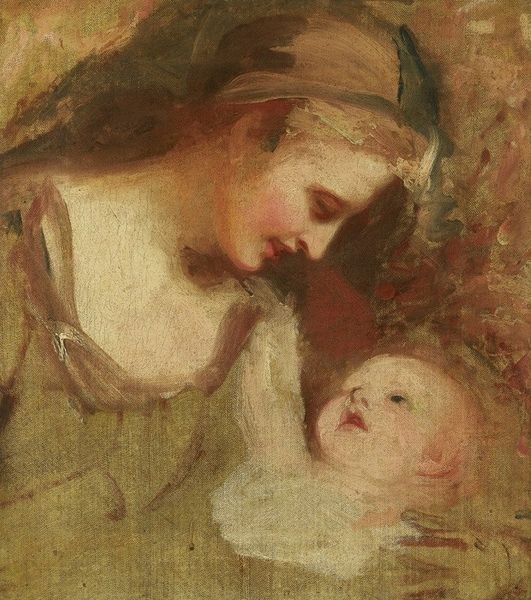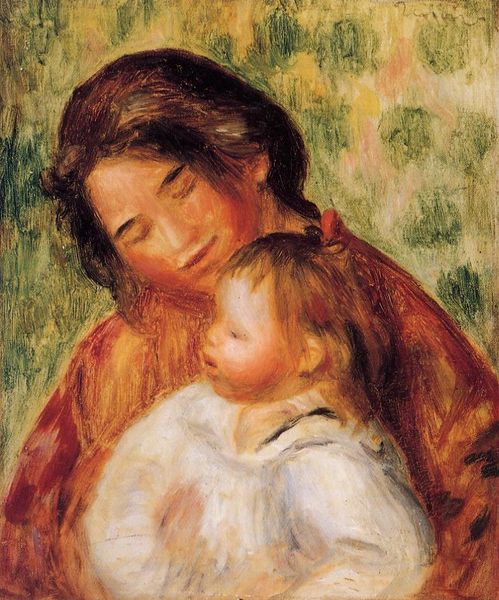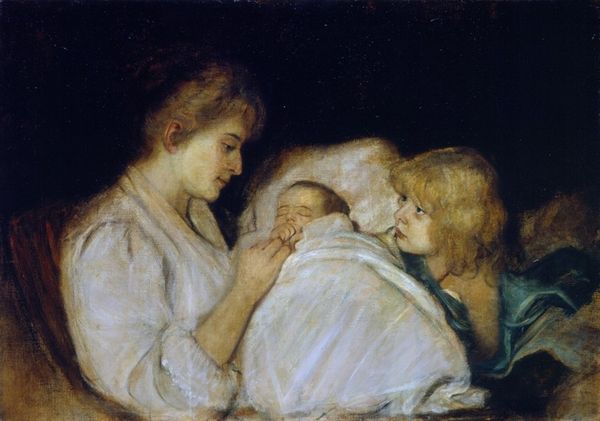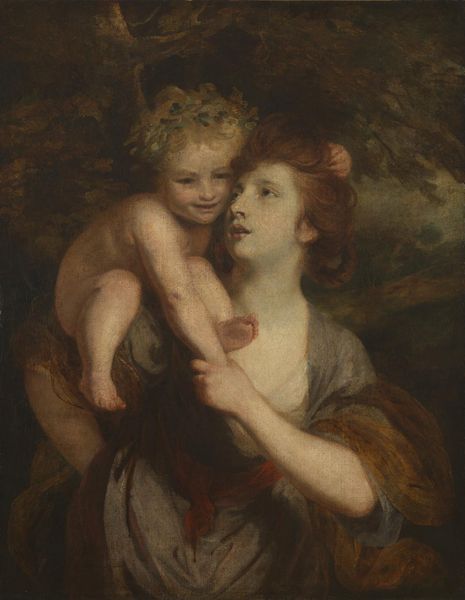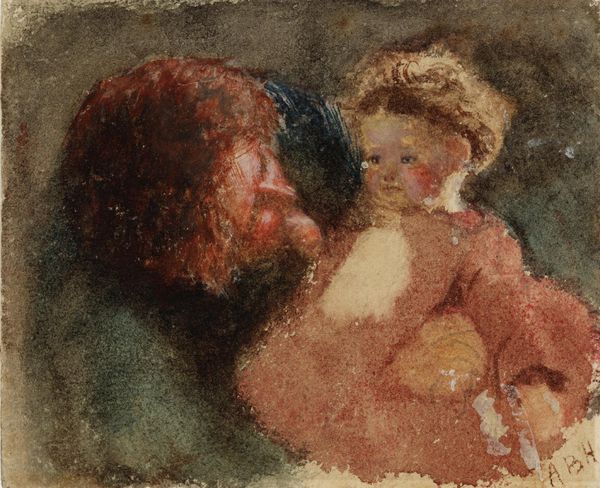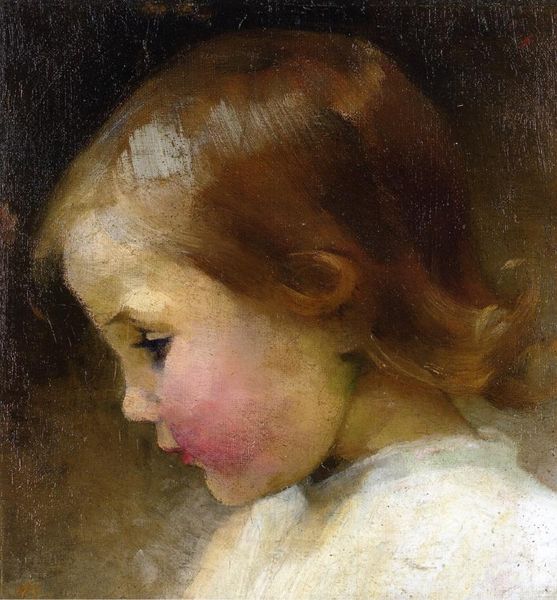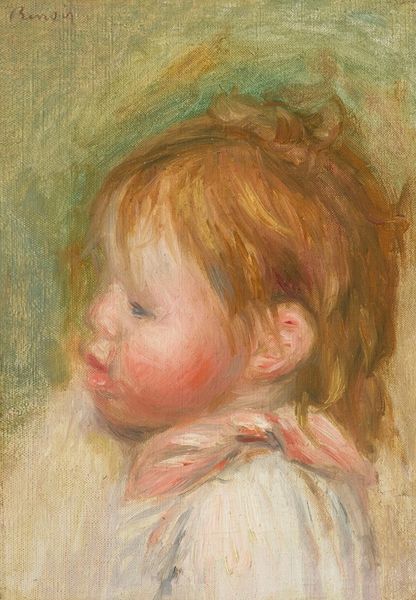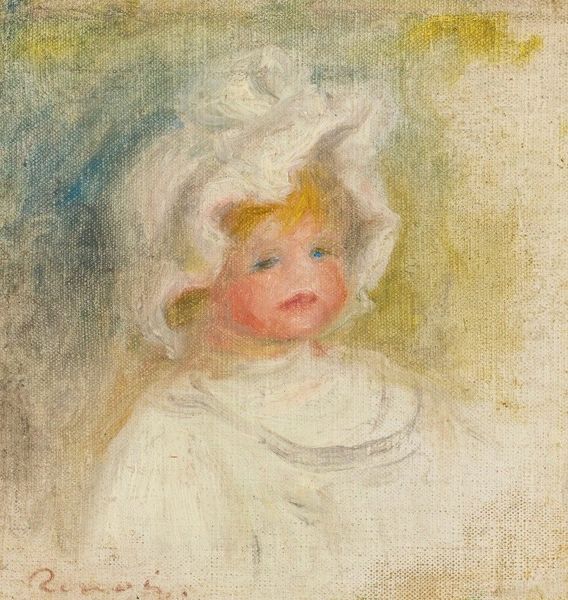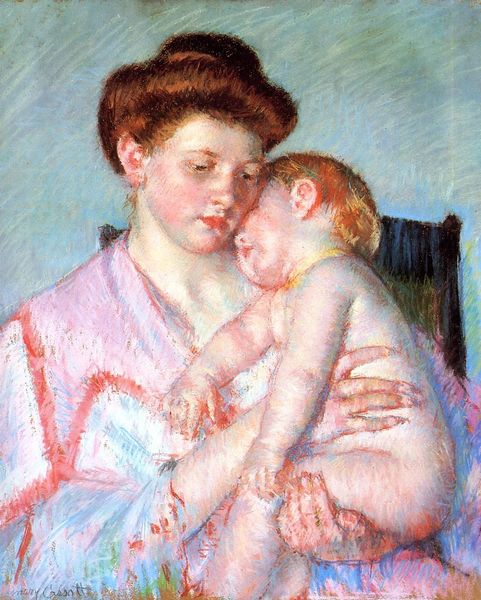
Copyright: Public Domain: Artvee
Editor: This is Renoir's "Petite fille avec sa poupée," painted around 1897-1900. It’s an oil painting, a fairly intimate scene. The girl almost seems to be sharing a secret with her doll. How do you interpret this work? Curator: It's a wonderful example of how Renoir both embraced and subtly challenged the expectations of portraying childhood. During the late 19th century, childhood became a prominent subject in art, often idealized or sentimentalized. Editor: So where does this particular painting sit in that history? Curator: Notice how Renoir avoids the sharp realism favored in academic painting. The soft brushstrokes and focus on light create a sense of fleeting, personal experience, pushing back on formal, official portraits. Instead of simply documenting, he's capturing an intimate moment, aligning with Impressionist ideals but also hinting at a shift towards modern art's emphasis on subjectivity. Do you think Renoir’s decision to call the subject a little girl as opposed to named person reflects this? Editor: Yes, I suppose it universalizes it a bit. The doll, also, seems so centrally positioned, as a point about who controls narratives perhaps? Curator: Absolutely. Consider the rise of consumer culture at the time. Dolls became increasingly elaborate, symbols of bourgeois domesticity, influencing how girls were taught to perform their gender roles. Editor: So this painting could be seen as both reflecting and questioning these societal forces. Curator: Precisely! It shows the social context shaping art's message. I hadn't really considered this piece in this light before. Thanks! Editor: Likewise, it's fascinating to think of Renoir responding to both artistic and social pressures of his time.
Comments
No comments
Be the first to comment and join the conversation on the ultimate creative platform.
